World Gone Mad, Part 2: “Perpetual Preferred” - John Rubino

October 12, 2016
Towards the end of a credit bubble, ideas that might have seemed crazy in more boring times are not just accepted but embraced by investors desperate to keep the high that comes from effortless bull-market profits.
In the junk bond bubble of the late 1980s, for instance, there was the “PIK preferred,” a kind of stock/bond hybrid that paid its holders in more securities (PIK stood for “payment in kind”). Companies could issue them with zero near-term cash flow consequence while credulous investors bought them for their “high yields.”
In the 2000s – as fans of The Big Short already know — bonds backed by mortgages written to people with no or unknown incomes were snapped up by pretty much everyone from major European banks to mainstream US mutual funds.
These and many other past credit bubble “innovations” eventually blew up, decimating nest eggs and imparting useful life lessons to savers and money managers.
But those previous versions of funny money pale next to what’s being invented these days. Negative-coupon bonds, obviously, belong at the head of any such list. But something even stranger is now spreading through low-interest rate countries: the perpetual subordinated bond. In Japan for instance:
Japanese investors flock to megabanks’ subordinated debt
(Nikkei) – Yield-hungry Japanese insurance companies and other domestic institutional investors are aggressively pursuing a type of perpetual subordinated bond issued by the country’s three megabanks.
Such hybrid subordinated convertible debt is known as additional tier-1, or AT1. When the issuer’s capital is impaired beyond a predetermined trigger level, due to write-offs on bad loans, for instance, these debt instruments are automatically converted into stock. The issuer could arbitrarily stop paying interest as well. The higher risks are compensated by higher returns.
Can’t get enough
In mid-September, U.S. Department of Justice demands for a huge fine on Deutsche Bank ignited concerns that the bank’s capital may be impaired. Fears that the major German financial institution could stop paying interest sent AT1 yields surging in Europe.
The Japanese market for AT1s, however, hasn’t been touched. Yields on megabank AT1 bonds, including those issued by Mizuho Financial Group, keep falling due to strong demand. It is the same story with the AT1 instruments offered by the two other Japanese megabanks — Mitsubishi UFJ Financial Group and Sumitomo Mitsui Financial Group. Bond yields move in the opposite direction of price.
“Confidence in Japanese megabanks’ AT1 securities is unshaken,” says Shoko Tsukamoto, a senior credit analyst at Mitsubishi UFJ Morgan Stanley Securities.
Domestic investors can’t seem to get enough of the hybrid subordinated bonds because they are one of just a handful of debt instruments that still offer yields above 1%. For insurers and other investors struggling to make returns in an ultralow-interest-rate environment unleashed by the Bank of Japan, AT1 bonds are an asset that they “absolutely must have,” one financial analyst said.
Since late September, rumors have been circulating that MUFG is preparing to issue more than 200 billion yen ($1.93 billion) in AT1 bonds at yields of 1.1% to 1.2%.
Coupon rates of megabank AT1 bonds have dropped sharply as domestic investors chase them aggressively. Mizuho issued an AT1 last year carrying a rate in the 2% level, but the figure roughly halved to the 1% level with a recent issuance.
AT1 securities count as capital, so major banks around the world have increased issuance in order to meet stricter capital requirements. Investors appear to be overlooking the risks inherent in these instruments because they are so desperate for yield amid the sea of low interest rates across the globe.
Toshiyasu Ohashi, Daiwa Securities’ chief credit analyst, says “AT1s are equities disguised as bonds.” “We should draw a lesson from the experience in Europe,” Ohashi argues, calling attention to the fact that Deutsche Bank’s AT1 prices have been fluctuating widely like stocks since concerns about the bank’s financial health surfaced.
That’s right. Bonds which never pay back principal, yield only 1%, and are converted to equity if the issuer gets into trouble (that is, at exactly the time when you don’t want to own their stock), are being enthusiastically snapped up by Japanese investors. After similar instruments have already blown up in Europe.
As the above article notes, such bonds are basically equities in drag, so investors are in effect taking a flyer on bank stocks in a country whose financial system is by some measures the world’s most over-leveraged.
But hey, we’ve been here before and already know how it ends. We just don’t know the timing – though shorting the Japanese banks today will probably look pretty smart a few years hence.
 |
John Rubino runs the popular financial website DollarCollapse.com. He is co-author, with GoldMoney’s James Turk, of The Money Bubble (DollarCollapse Press, 2014) and The Collapse of the Dollar and How to Profit From It (Doubleday, 2007), and author of Clean Money: Picking Winners in the Green-Tech Boom (Wiley, 2008), How to Profit from the Coming Real Estate Bust (Rodale, 2003) and Main Street, Not Wall Street(Morrow, 1998). After earning a Finance MBA from New York University, he spent the 1980s on Wall Street, as a Eurodollar trader, equity analyst and junk bond analyst. During the 1990s he was a featured columnist with TheStreet.com and a frequent contributor to Individual Investor, Online Investor, and Consumers Digest, among many other publications. He currently writes for CFA Magazine. |
The author is not affiliated with, endorsed or sponsored by Sprott Money Ltd. The views and opinions expressed in this material are those of the author or guest speaker, are subject to change and may not necessarily reflect the opinions of Sprott Money Ltd. Sprott Money does not guarantee the accuracy, completeness, timeliness and reliability of the information or any results from its use.
Don’t miss a golden opportunity.
Now that you’ve gained a deeper understanding about gold, it’s time to browse our selection of gold bars, coins, or exclusive Sprott Gold wafers.
About Sprott Money
Specializing in the sale of bullion, bullion storage and precious metals registered investments, there’s a reason Sprott Money is called “The Most Trusted Name in Precious Metals”.
Since 2008, our customers have trusted us to provide guidance, education, and superior customer service as we help build their holdings in precious metals—no matter the size of the portfolio. Chairman, Eric Sprott, and President, Larisa Sprott, are proud to head up one of the most well-known and reputable precious metal firms in North America. Learn more about Sprott Money.
Learn More
You Might Also Like:





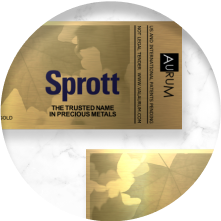
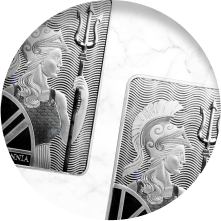

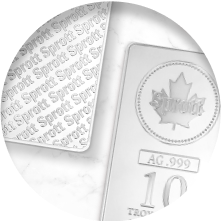

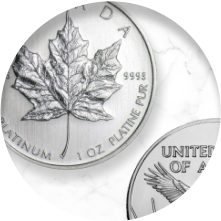

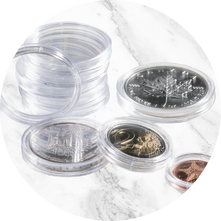
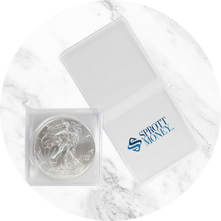


Looks like there are no comments yet.